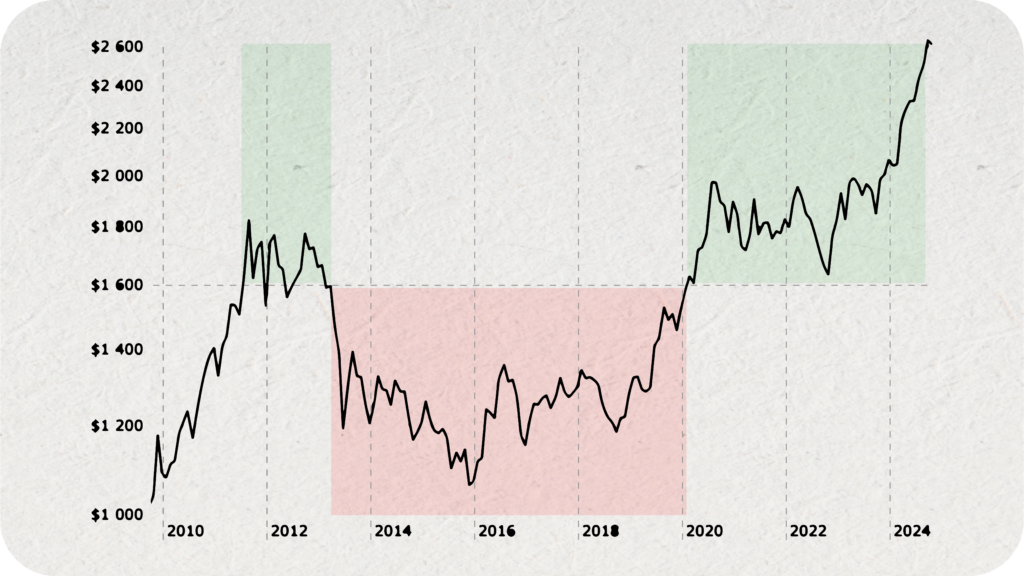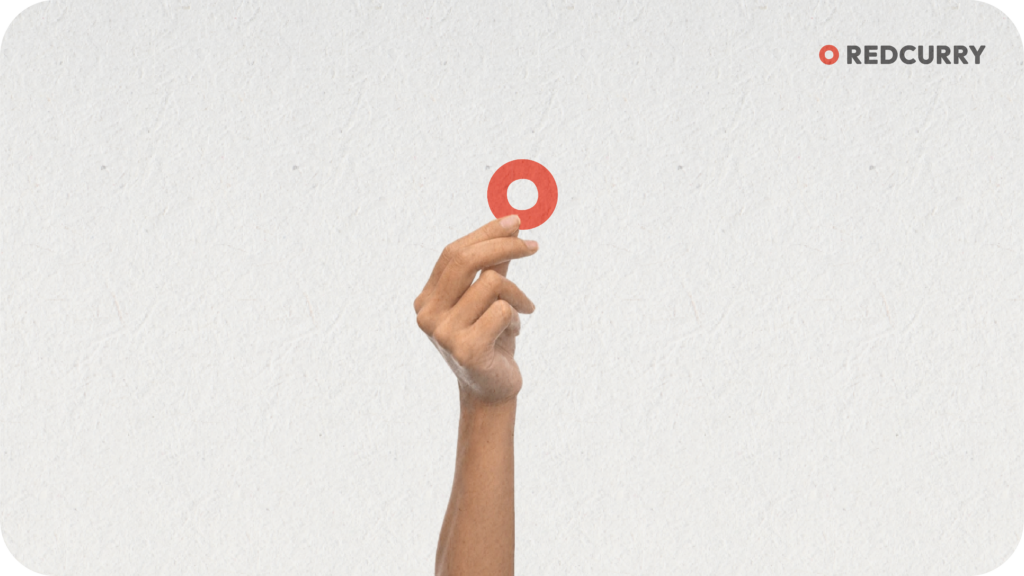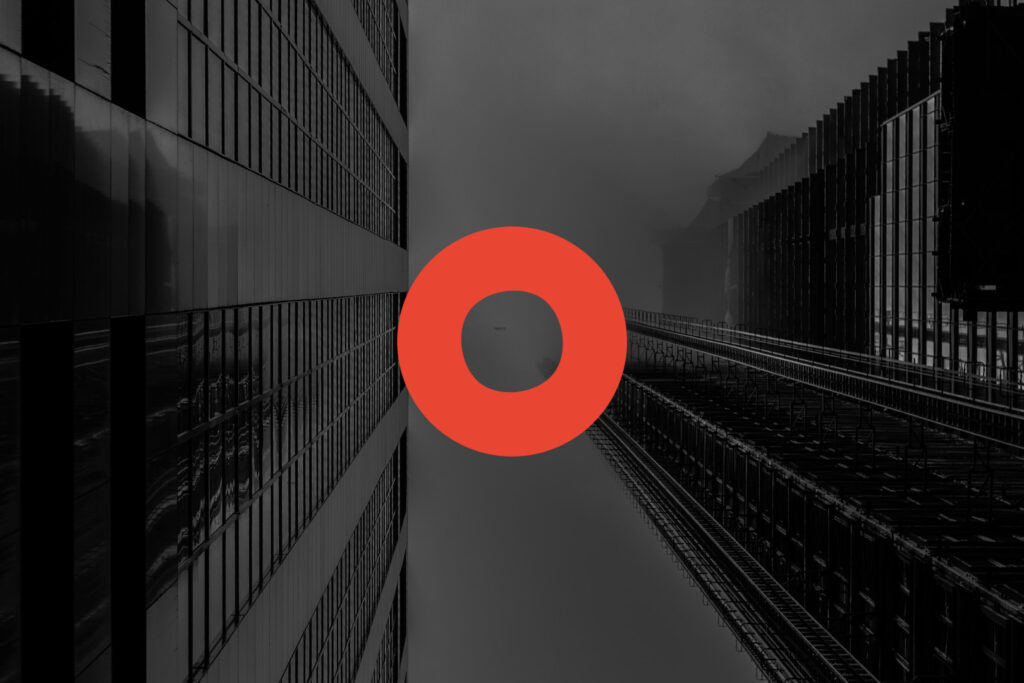When it comes to saving or investing, no one wants to lose money. That’s why so many people stick to low-yield or no-yield savings products. For most, it’s easier to tolerate gradual loss to inflation than to take on the risks higher-yielding assets carry.
High-yield options often come with a catch: You either have to lock your money away for long periods or expose yourself to volatile markets, where values can swing unpredictably.
Sudden swings in asset prices can leave you stuck. You invest for growth, but if the price drops, you’re trapped. You’re forced to sell at a loss or wait for the market to recover, rendering your money illiquid—sometimes for months or even years. This is called the volatility trap.
In the sections that follow, we’ll explore how Redcurry, real estate-backed digital currency, is designed to sidestep this volatility trap and (through it’s compounding growth mechanism) offers a stable value growth.
Prefer to listen instead? Tune in to the podcast version at the end of this article. 🎧
Volatility Trap Explained
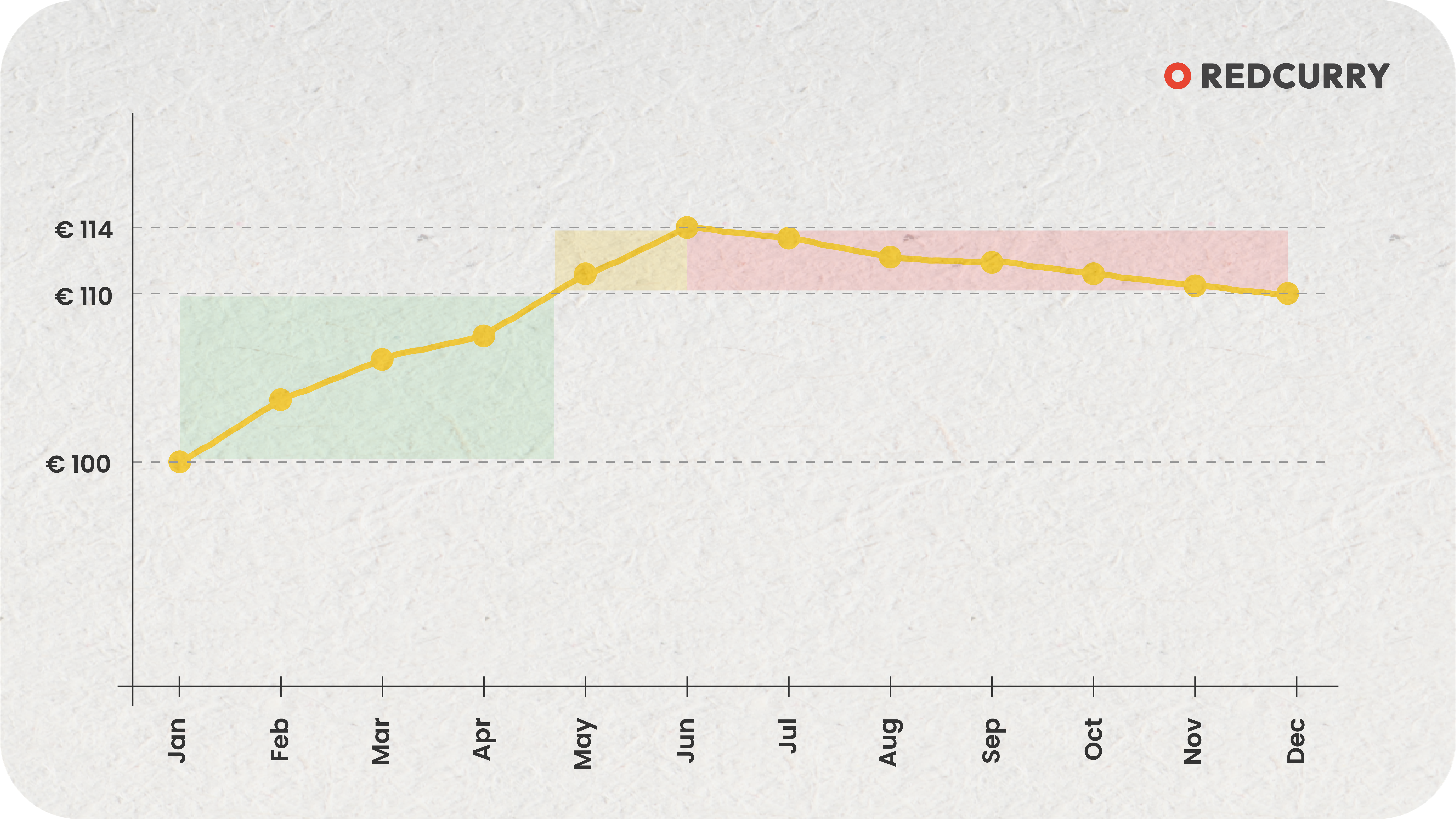
Let’s examine a common issue savers and investors face using the visual example above. The graph shows an asset that grows in value by 10% over the year—from €100 in January to €110 in December.
At first glance, this looks like a great outcome. The asset even peaks at €114 in June, allowing those who bought in January and timed their exits well earn a greasy 14% return in just 6 months.
But that’s just one side of the coin. After peaking around mid-year, the value starts to decline. So, despite this annual growth of 10%, anyone who entered the market after the price hit €110 found themselves in a difficult position.
People buying in May (yellow zone on the graph) still stood a chance to turn a profit if they sold soon after buying. But everyone who entered in June or later (red zone on the graph) only saw their investment lose value over the next 6 months.
If any of these investors needed their money during the decline, they were stuck—forced to sell at a loss or wait, hoping the value would recover. This is the volatility trap.
Therefore, an asset growing steadily from €100 to €110 (illustrated on the graph below) is much better than one that briefly peaks at €114.
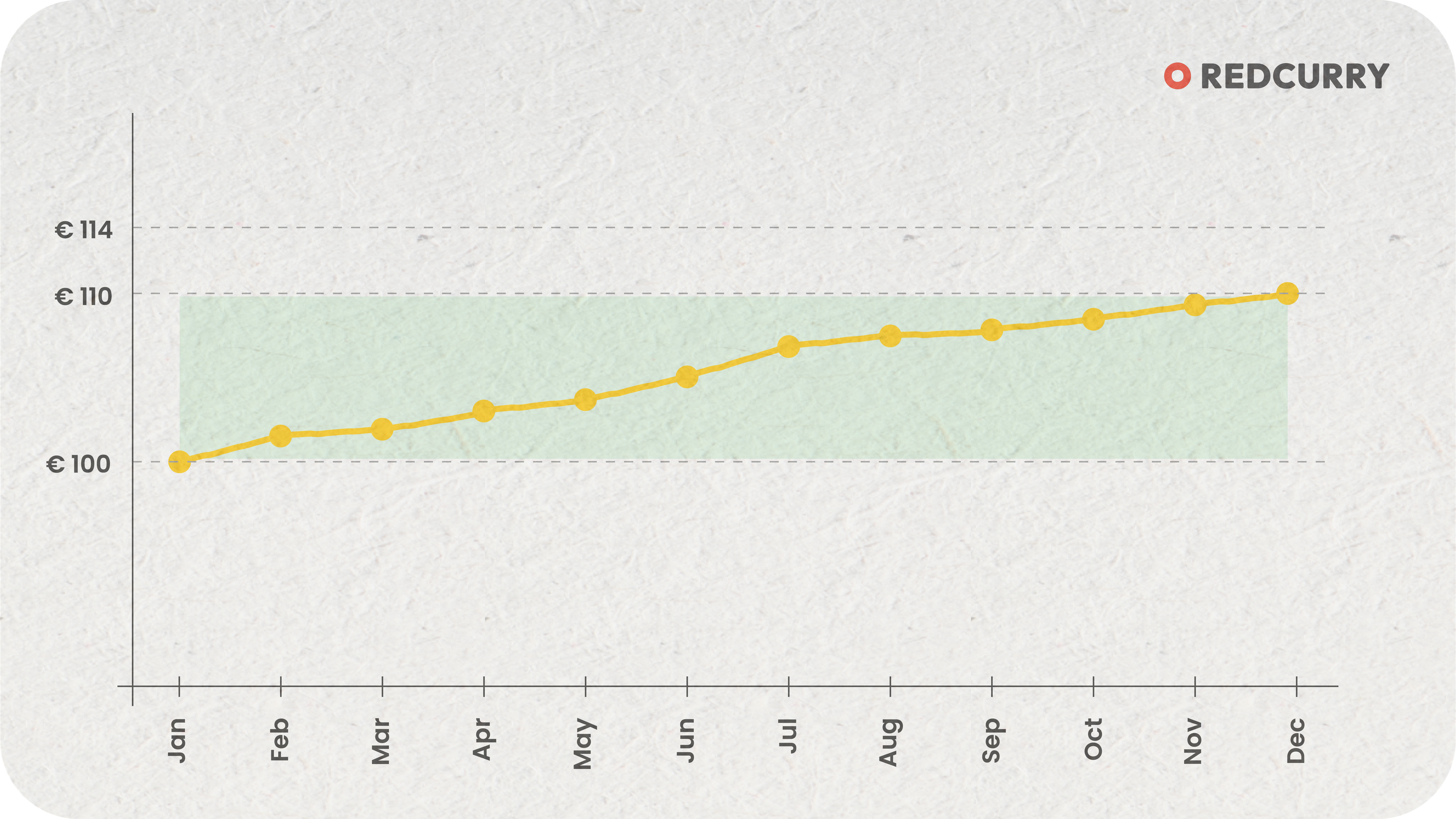
Yes, there are no quick 14% returns for anyone, but there are no losers either. This steady 10% rise means that savers don’t have to worry about timing the market or facing sudden price drops. Instead, they can count on a predictable, continuous growth in value.
In fact, for the money you may need to access, a stable path to 5% is far better than a long, unpredictable, bumpy road to 10%.
Volatility Trap: A Real-Life Example
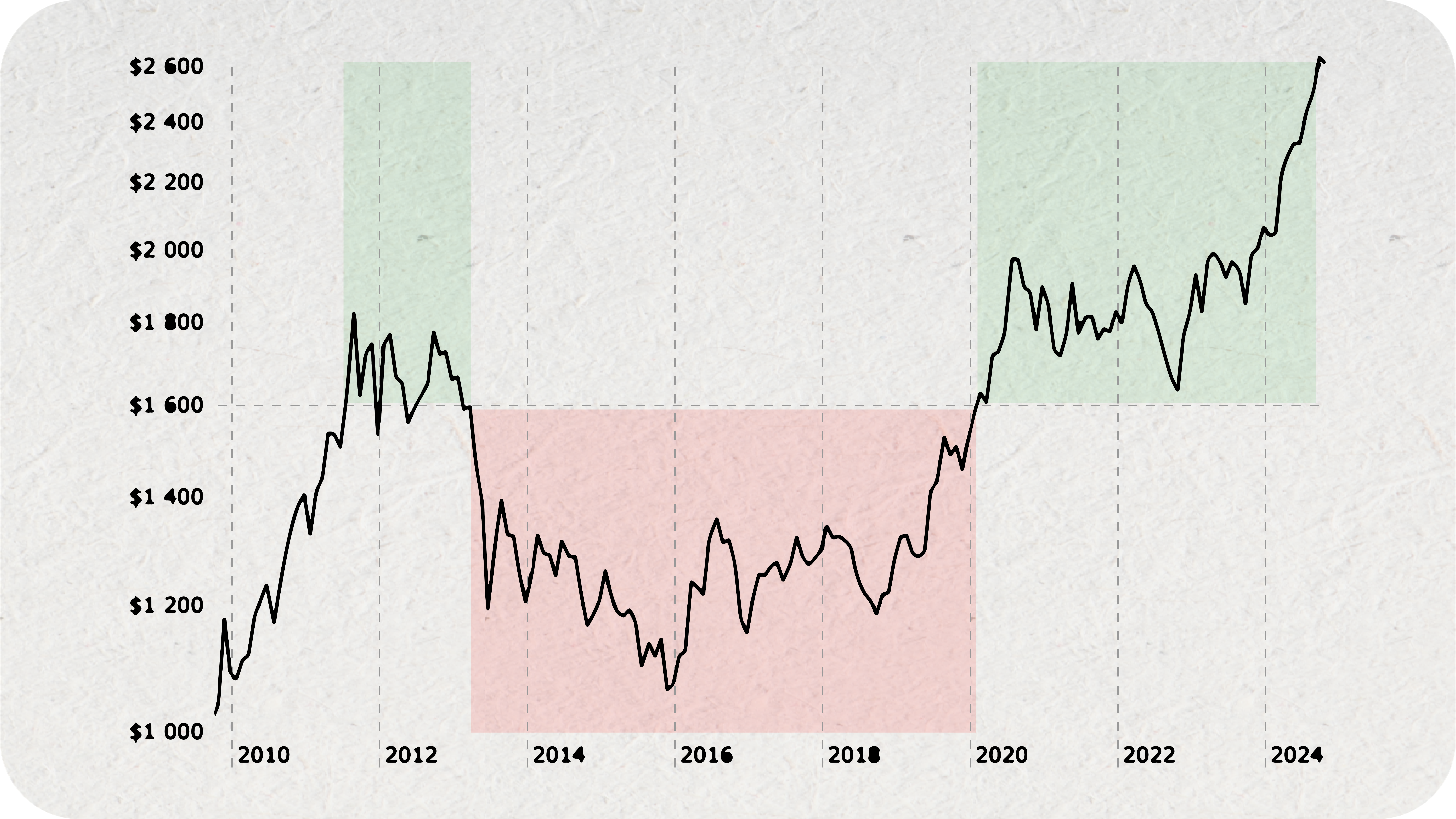
Here’s a real-life example illustrating the volatility trap. The graph above depicts the 15-year history of the gold price.
From 2009 to 2011, gold saw significant growth, climbing from around $1,000 to over $1,800—an impressive return for those who entered before 2010.
But look at what happened after 2013, the price entered a prolonged period of decline and volatility, dipping as low as $1,050. Anyone who bought gold at its peak in 2013 found themselves trapped in the red zone for 7 years(!), unable to sell without taking a significant loss.
Even though gold eventually recovered in 2019 and rose to new highs in 2023, the savers who needed liquidity during the downturn were stuck for a very long time.
This example highlights the problem savers and investors face with volatile assets: even an asset perceived as “safe,” like gold, can expose holders to sudden and prolonged drops in value, leaving them without access to their money when they need it most.
Solving the Volatility Problem: Redcurry’s Stable Growth Model
Redcurry, a real estate-backed digital currency, works similarly to asset-backed stablecoins (like Tether) but has one fundamental difference. When Tether holds its reserves in cash and is designed to maintain a stable value, Redcurry holds its reserves in rent-generating commercial real estate and is designed to grow in value.
That’s why achieving low volatility is essential—it ensures users can move in and out of Redcurry easily without needing to worry about timing their entries or exits. In Redcurry’s case, there are two causes for potential volatility:
- Demand for Redcurry – Market demand for Redcurry can rise or fall, influencing its price.
- Demand for the real estate backing Redcurry – Fluctuations in the value of the commercial real estate (CRE) backing Redcurry can introduce price changes, as Redcurry’s value is tied to these assets.
In order to achieve stable growth, both of those potential causes for volatility must be carefully managed. For that, there is a unique Price Stabilization System in place.
Let’s take a closer look at how this Price Stabilization System works and how it helps navigate the market demand-driven volatility and commercial real estate value fluctuation-driven volatility:
Navigating Market Demand-Driven Volatility
Market volatility happens when the price of an asset fluctuates due to changes in demand, speculation, or market events. Take Bitcoin, for instance. Its value often swings dramatically because it is driven by investor sentiment and market hype. When demand surges, Bitcoin’s price rises. But as soon as sentiment shifts or confidence falls, so does the price—sometimes rapidly, leaving investors exposed to sudden losses.
The problem with assets like Bitcoin is that they aren’t backed by anything tangible, so their price is entirely driven by speculation and market demand. Meanwhile, Redcurry is 100% backed by commercial real estate. So, the value of Redcurry is determined by the value of the real estate portfolio backing it, not by market demand.
Since Redcurry’s value is tied to real-world assets (commercial properties), there’s no room for speculative price jumps or drops based on the demand for Redcurry. This creates a self-regulating mechanism, illustrated on the image below.
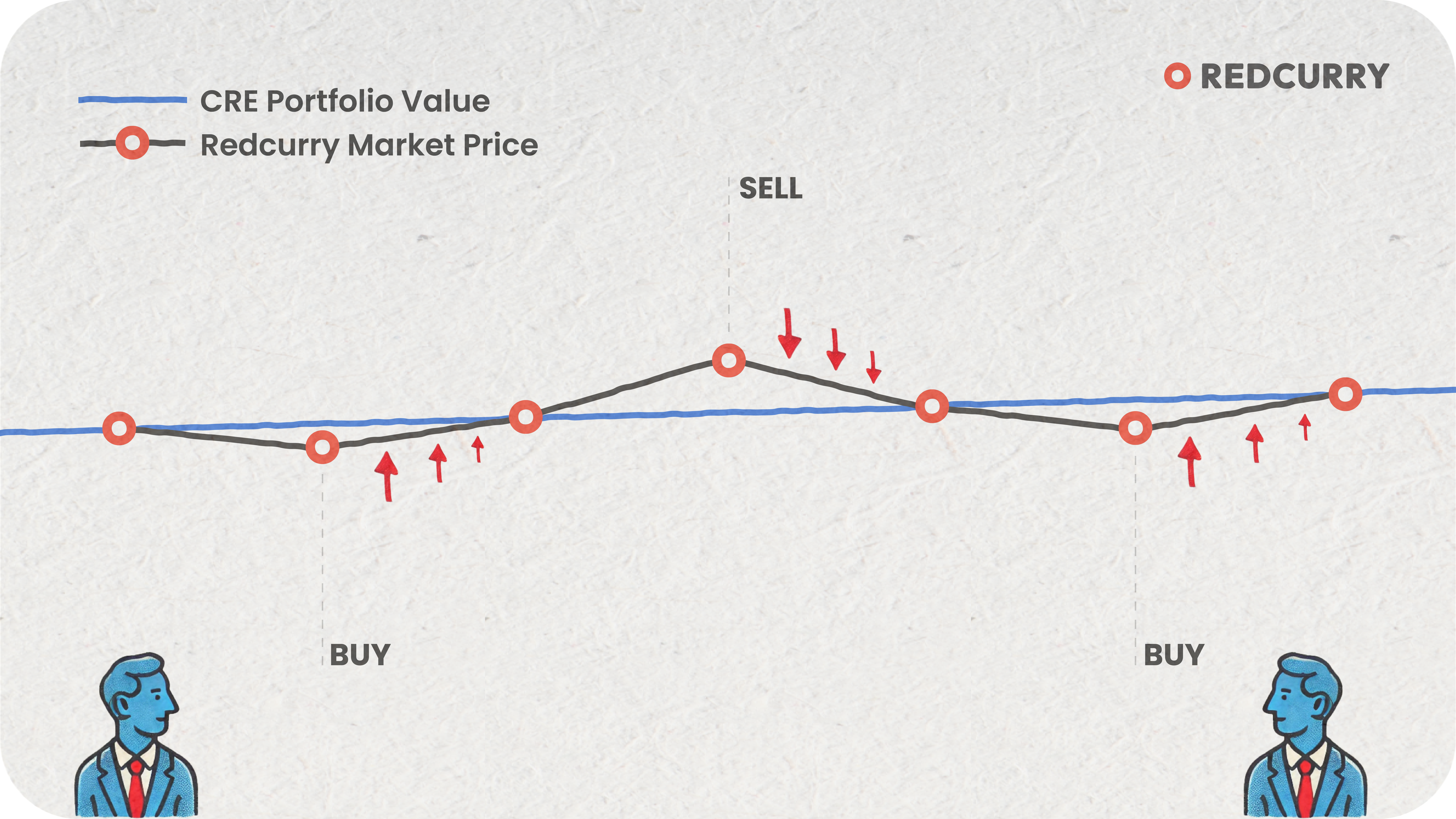
For example, suppose each Redcurry in circulation is backed by €10 worth of commercial real estate. If demand for Redcurry increases and the price starts to rise above its real estate backing—say to 10 euros and 10 cents—many holders would quickly sell to lock in profits. After all, you’re essentially selling €10 worth of real estate for €10.10. As more people sell, the price naturally drops back towards €10, keeping it in line with its underlying value.
On the other hand, if demand decreases and the price drops below €10, say to €9.90, the opposite effect occurs. People start buying because they know they’re getting €10 worth of real estate for just €9.90. This buying pressure pushes the price back up, stabilizing it again around the true value of the real estate portfolio.
This self-regulating mechanism keeps Redcurry’s price stable and closely aligned with the value of the assets backing it, regardless of market demand fluctuations.
Navigating Real Estate Market Volatility
Now that we’ve covered how demand for Redcurry can affect its price and how this aspect is managed to maintain stability, let’s look at the other factor for potential volatility—the value of the real estate backing Redcurry.
If the value of Redcurry is determined by the value of the real estate portfolio backing it, any changes in the property values would directly affect the price of Redcurry. To navigate potential volatility caused by the real estate market—in other words, to mitigate the risks of the portfolio losing value(!)—Redcurry’s investment strategy prioritizes stability over maximizing yield. There are three key elements to this strategy:
1. Specific Focus: Long-Term, Cash Flow-Generating Commercial Real Estate
Unlike residential real estate, which is typically valued based on demand and location, commercial real estate is primarily valued based on the income it generates, such as rent from tenants. So, when apartments and houses are typically owner-used, and the only performance indicator is the price at which you can sell the property, then the value of the office building or a shopping center is tied to the cash flow it can produce.
In short, when businesses struggle during recessions and tenants start leaving, the value of the building decreases. At the same time, when tenants stay put, the value stays put. So, how well a real estate portfolio navigates harsher times comes down to the investment strategy. Redcurry will base its investment strategy on commercial properties where the risk of tenants leaving is minimized.
A built-to-suit logistics terminal in a prime location with a 15-year inflation-indexed lease agreement is far more likely to grow in value over the course of a decade and provide greater stability during market fluctuations than, say, speculative real estate developments or land-banking projects.
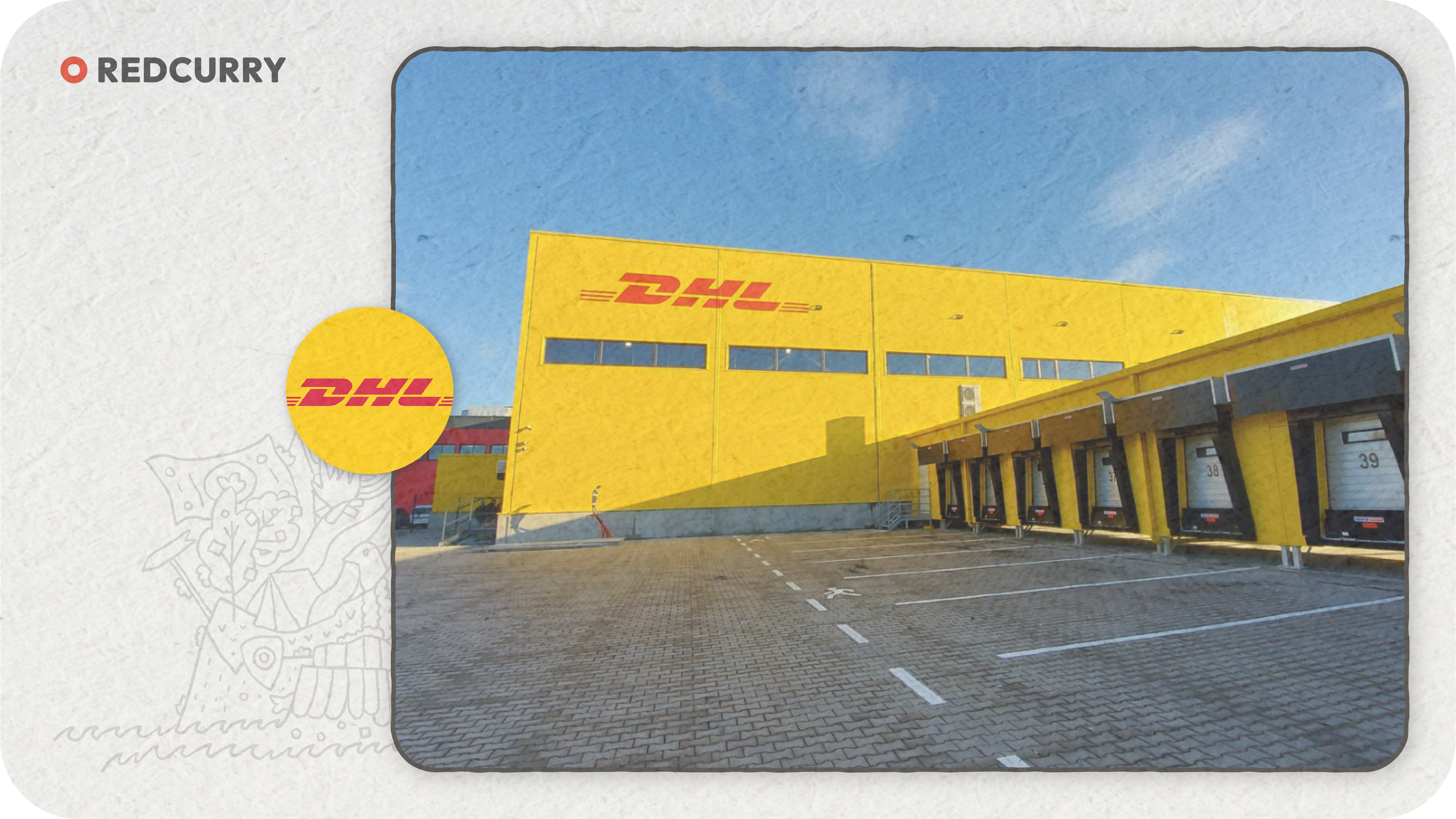
A build-to-suit DHL logistics terminal in Vilnius Airport, part of the Redcurry portfolio through our investment in the EIKA Real Estate Fund. This high-quality asset contributes to the stability and growth of Redcurry.
That’s why Redcurry focuses solely on commercial real estate secured by lengthy, unbreakable lease contracts. This includes office buildings, industrial properties, retail spaces, and warehouses, which provide steady, long-term rental income.
2. Diversification: Spreading Investments Across Different Regions and Property Types
As mentioned above, Redcurry’s investment strategy is designed to minimize risk and maximize stability. To achieve that, diversified portfolios are prioritized over single-building investments.
Capital backing Redcurry is exclusively invested in established, well-managed real estate funds that align with Redcurry’s investment strategy until the portfolio reaches €10 million in assets under management (AUM). Only after that point investments in single-building commercial properties will be considered.
The initial €1 million backing Redcurry is strategically invested in the EIKA Real Estate Fund, which is acquiring commercial properties with strong cash flow across Central and Eastern Europe. This provides regional and asset-type diversification for Redcurry holders, so any price fluctuations in one or two properties have minimal (if any) impact on the overall portfolio and, thus, the Redcurry price.
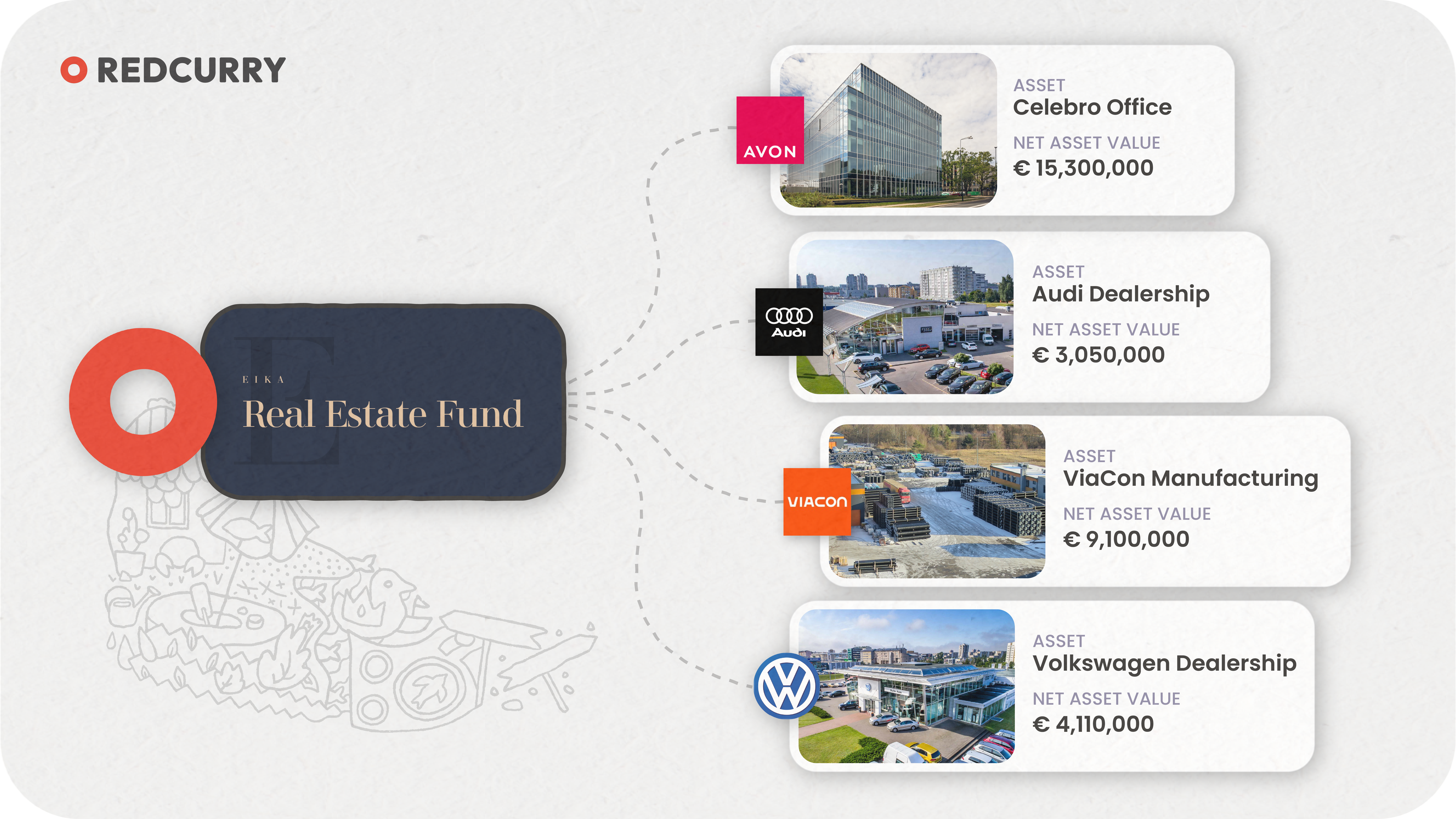
Holding EIKA Real Estate Fund shares ensures diversification, minimizes volatility, and gives Redcurry holders access to prime commercial real estate with reputable global brands as tenants.
3. Conservative Valuation Principles: Using Original Acquisition Value
The final piece in navigating CRE market volatility lies in how properties within the Redcurry portfolio are valued. This approach is one of the most distinctive aspects that sets Redcurry apart from others in the real estate space, including tokenized real estate projects, REITs, and similar assets.
Properties in the Redcurry portfolio aren’t valued based on how much they could be sold for today. Instead, Redcurry’s valuation methodology is based on each property’s acquisition value, which we call the Original Acquisition Value (OAV).
This OAV (aka. purchase price) is far more stable because it reflects the actual cost of acquiring the property rather than fluctuating market estimates. By using the OAV, CRE portfolio behind Redcurry is protected from the volatility that comes with market speculation, providing a more reliable and transparent measure of value. It also ensures users that no one can artificially inflate asset prices.
Whenever a new property is bought, it will be recorded on the blockchain and kept in the books at the total purchase price. This total purchase price is the original accusation value (OAV)—it is always a concrete number and reflects the exact amount of money paid to buy the property. Hence, OAV is a clear and undeniable fact, not an estimate or opinion about the property’s worth.
This does not mean property valuations in the Redcurry portfolio remain constant forever. OAV can change over time. If additional investments are made to improve the building, the OAV will be adjusted to reflect these investments.
Say you buy a 10-story building for €10 million. After a few years, you decide to add another floor, investing additional €1 million into the construction. Now, naturally, the building becomes more valuable, and the new OAV is: €10 million + €1 million = €11 million.
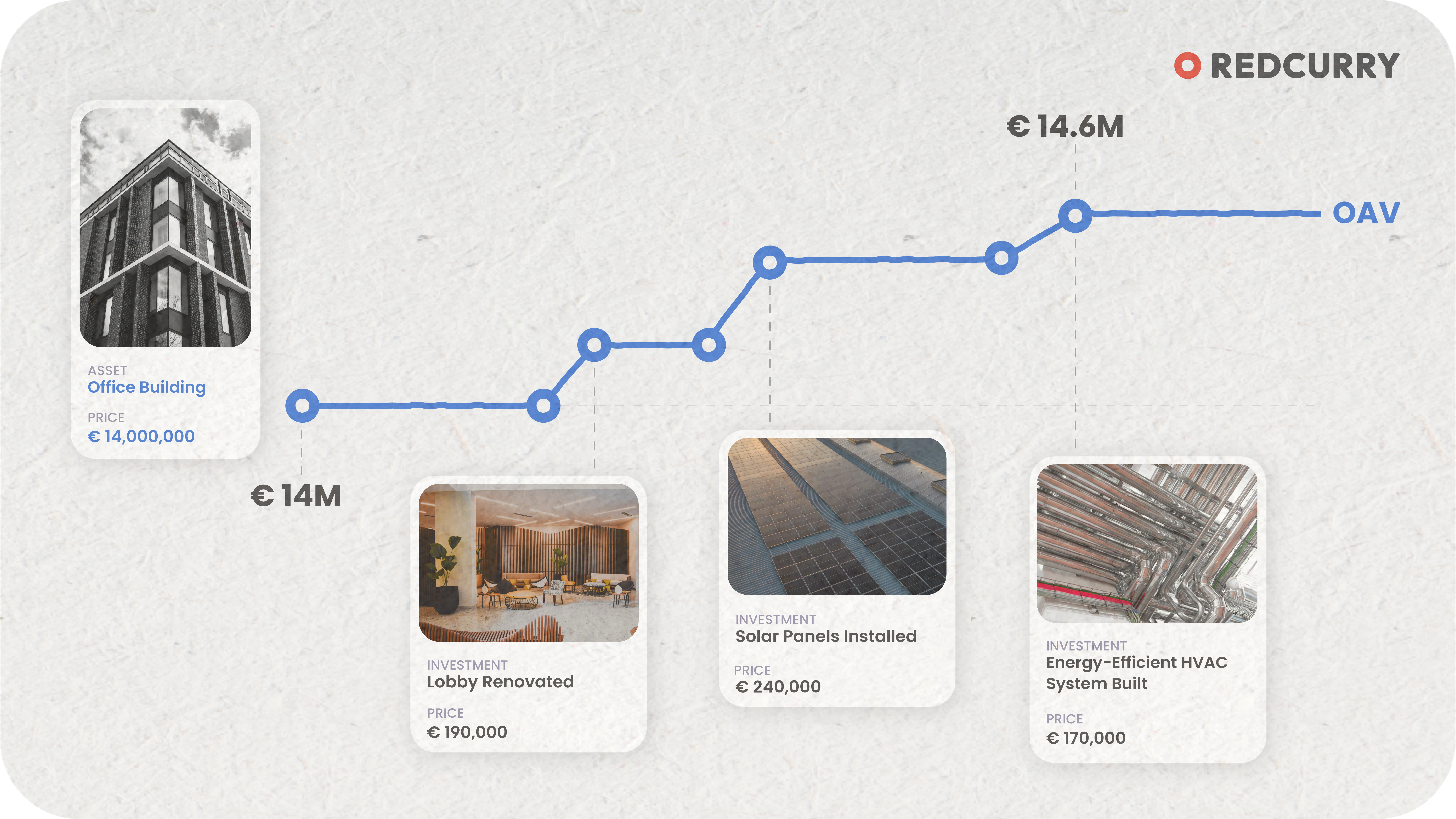
Image illustrating how long-term investments into an office building increase its OAV (Original Acquisition Value) from €14 million to €14.6 million over time.
The OAV-based valuation method has several benefits. First, it ensures long-term trust in the NAV (Net Asset Value) of the commercial real estate portfolio backing Redcurry, as it leaves no room for price manipulation—OAV is solely based on accounting figures, including clearly reported acquisition price and any subsequent investments to better the property.
Secondly, using a purchase price method and tracking property values based on OAV reduces volatility. It prevents inflating property values during booms. And in turn, as property values are not increased during booms, no devaluation is needed in downturns.
The graph below illustrates how a property’s OAV (Original Acquisition Value) remains stable over time while its market value fluctuates due to external factors like speculation, investor sentiment, and macroeconomic cycles.
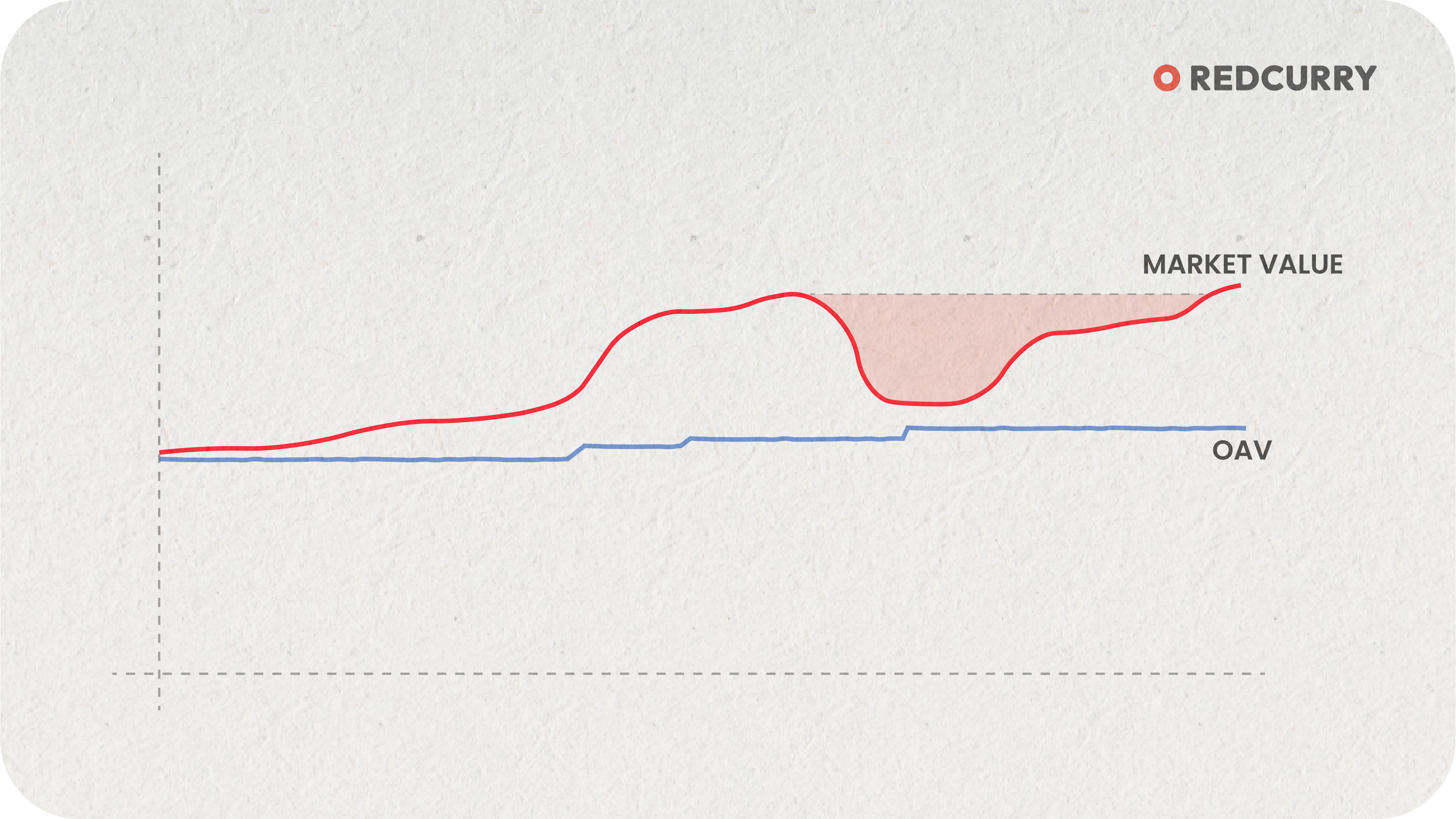
As seen on the image, the market value and OAV of a property start at the same point, as the purchase price initially reflects both. However, over time, the two diverge because market value reacts to external forces, while the OAV is a fixed value.
The market price line moves up and down, reflecting periods of boom and bust—rising sharply when demand and speculation drive prices up and falling just as steeply during downturns. This leaves those who bought in during the boom trapped (red zone on the graph above).
In contrast, the OAV line stays relatively flat, only increasing when actual investments, such as renovations or expansions, are made. This valuation method prevents artificial price inflation during market peaks and eliminates the need for drastic corrections in downturns, acting as a built-in buffer against volatility traps.
The graph below illustrates the real-life difference between the OAV-based and market price-based approaches to property valuations.
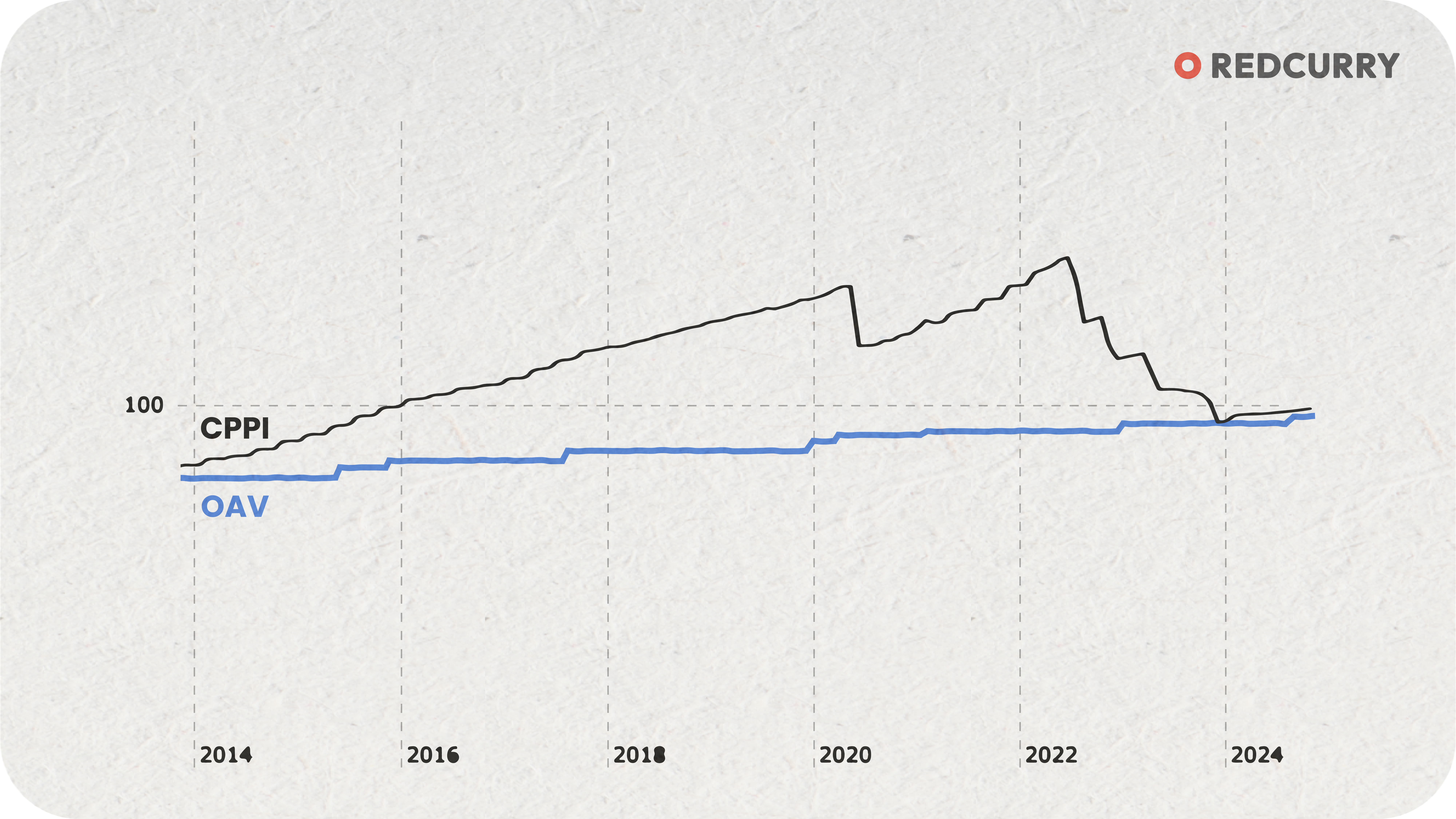
The black line on the graph depicts the CPPI, or Commercial Property Price Index, tracked by Green Street, which represents Pan-European commercial property values at which commercial real estate transactions are currently being negotiated and contracted. As the graph shows, the CPPI line is much more volatile, rising sharply during periods of economic growth but also dropping significantly during market downturns.
Meanwhile, the blue line represents the OAV of a theoretical commercial real estate portfolio assembled in 2014, containing industrial (25%), office (25%), retail (25%), and warehouse (25%). Since the OAV only changes when additional investments are made into the property, such as renovations or improvements, it remains relatively stable over time, offering a more predictable value baseline and growth. Most importantly, it can weather even the most significant market downturns.
As shown in the graph, including an additional 10% of the total property values invested in renovations over the decade, the risk of the CPPI falling below the increasing OAV is minimal. Even during the market turbulence at the end of 2023, the CPPI briefly only dipped to the level of OAV but never below it, illustrating the resilience of this valuation approach.
By basing the portfolio valuations on the OAV of the properties, Redcurry can offer more consistent value growth and ensure the portfolio’s NAV does not fluctuate because of short-term real estate market movements.
Original Acquisition Value Impairment (OAVI): Maintaining Price Stability in Extreme Scenarios
Even when the unforeseen happens and the market experiences a significant downturn, Redcurry’s valuation method ensures greater stability.
If a property’s market value drops below its Original Acquisition Value (OAV), a downward adjustment, called the Original Acquisition Value Impairment (OAVI), is applied. This ensures that any property in the portfolio is never valued higher than it could actually be sold for. OAV – OAVI = market price.
In each property valuation and audit, the OAV is compared to the current market price. If the market price is equal to or higher than the OAV, nothing changes—the property’s valuation remains the same. However, if the market price takes an intense dive and drops below the OAV, the Original Acquisition Value Impairment (OAVI) is applied, and the price is corrected.
Downward corrections are never good, but they are far less impactful with the OAV-based valuation method. Since OAV-based accounting does not inflate property values during booms, any necessary corrections are usually minimal.
The following image illustrates how two different valuation methods—market price-based and OAV-based—can have a significantly different impact on your portfolio during a major market downturn.
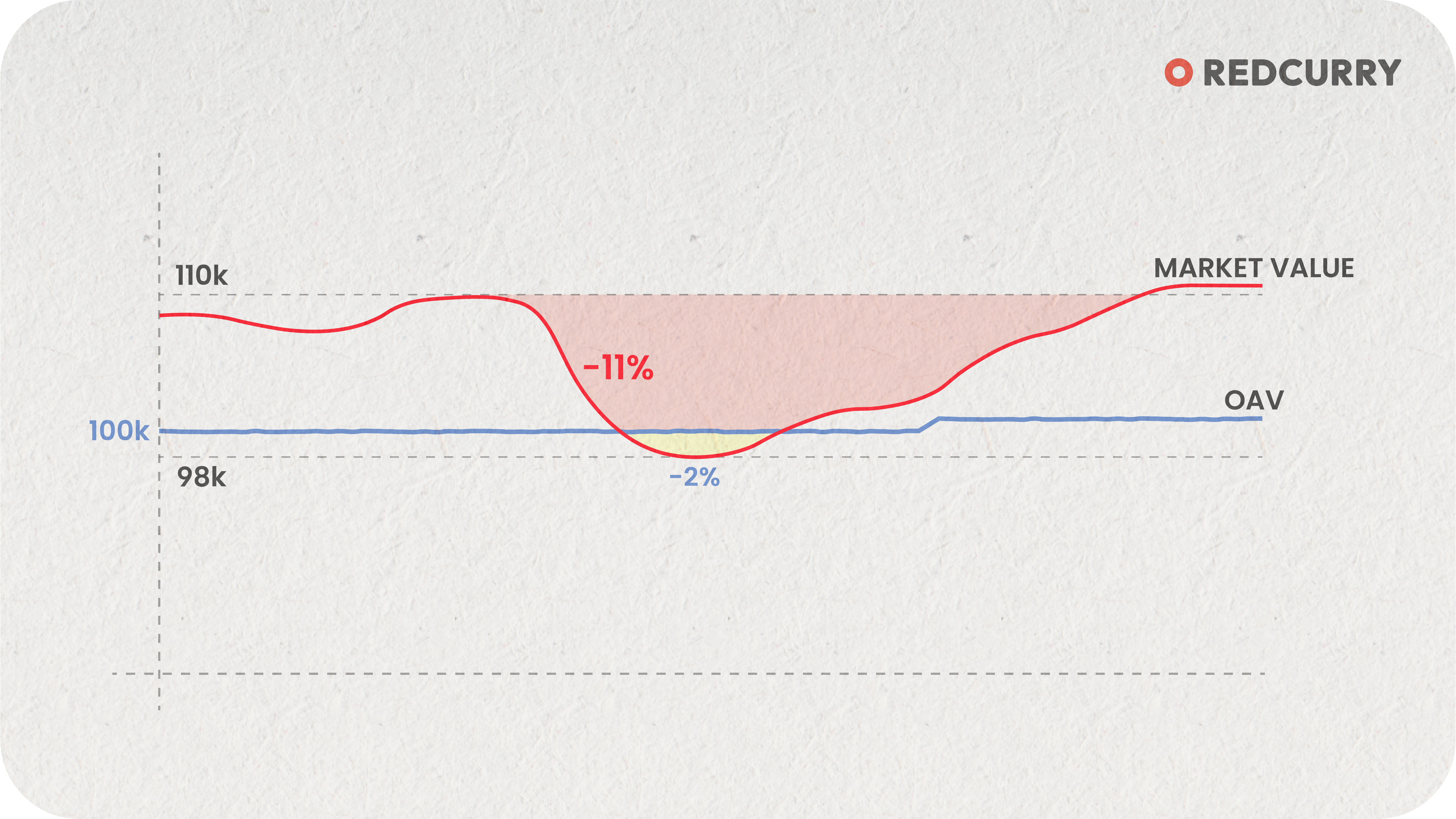
Let’s analyze the image in detail. The blue line represents the OAV of a commercial building bought some time ago. The red line represents the market value. Over time and after some additional investments into the building, the OAV is currently €100k. Meanwhile, the market value has soared to €110k (red line on the image).
At some point, the real estate market takes a hit, and the property value drops to €98k. For portfolios tied directly to fluctuating market prices, this means a sharp 11% decline. At the same time, the drop remains minimal for OAV-based portfolios, just 2%.
Furthermore, a 2% decline is significantly easier to recover from than an 11% loss. As market prices rebound, the OAV-based valuation naturally stabilizes faster. Based on pure logic and the elementary rules of mathematics alone, the price will always reach €100k before it reaches €110k.
So, regarding Redcurry, any downward correction is likely a minor adjustment rather than a drastic drop. Plus, even in extreme scenarios like the one depicted in the image, portfolios that rely on OAV spend much less time trading in negative compared to portfolios whose value is determined by the property’s market price (the yellow zone vs the red zone).
How Redcurry Achieves Stable Value Growth?
Redcurry’s value growth is not tied to real estate price appreciation. Instead, it’s built on a carefully designed compounding growth mechanism driven by strategic reinvestment of rental income. Here’s how it works:
The commercial properties backing Redcurry are carefully selected for their ability to generate long-term, stable rental income. This cash flow, derived from inflation-indexed lease agreements, provides consistent 4-8% annual returns.
The rental income generated by the portfolio is not distributed but reinvested into acquiring additional commercial real estate. As new properties are added to the portfolio, the value of each Redcurry in circulation naturally increases. This happens because no new Redcurry is minted—meaning the Redcurry supply remains the same while the CRE portfolio backing Redcurry expands.
This reinvestment sets a compounding growth cycle into motion, as shown in the graph below.
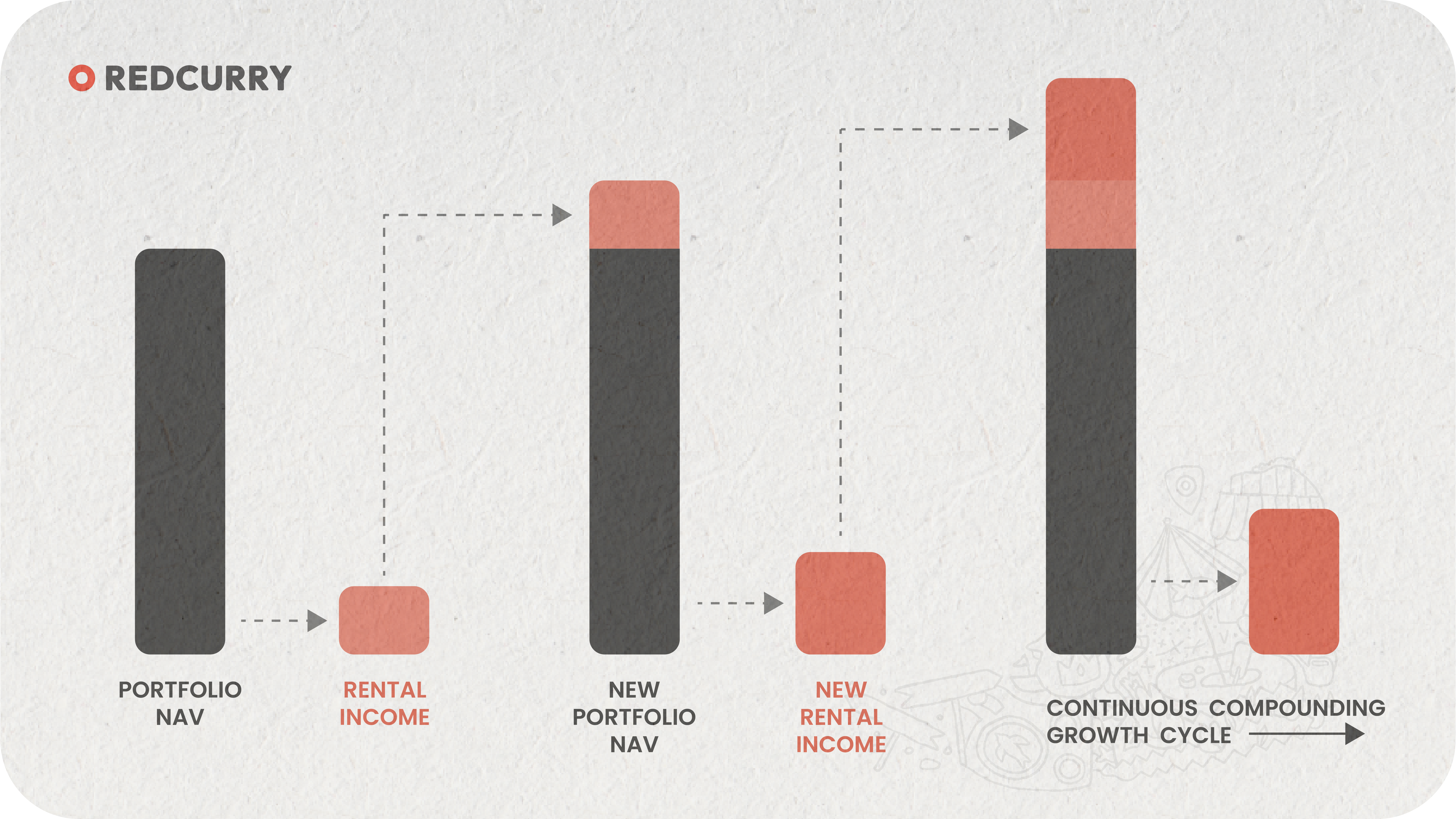
Each time rental income is reinvested to buy more real estate, the portfolio grows. In turn, a larger portfolio with more income-producing properties generates more rental income.
With each reinvestment cycle, the portfolio expands further, and the rental income it generates increases. This self-sustaining process ensures Redcurry’s value grows steadily and predictably over time, delivering compounding benefits to its holders without relying on property price appreciation or (potentially volatile) market speculation.
Final Words: Avoiding The Volatility Trap
Markets go up and down. Prices rise and fall. Some things stay uncertain no matter how much you plan. But not everything has to be that way. Some things can just grow, steadily, without the noise.
Redcurry is designed to be one of those things. By carefully selecting income-generating commercial real estate and eliminating speculation from portfolio valuation, it keeps volatility at bay and delivers steady and predictable value growth. Ideal for saving money that you may need to access at any time.
🎧 Some ideas are best explained in conversation. That’s why we turned this article into a podcast. Tune in:
